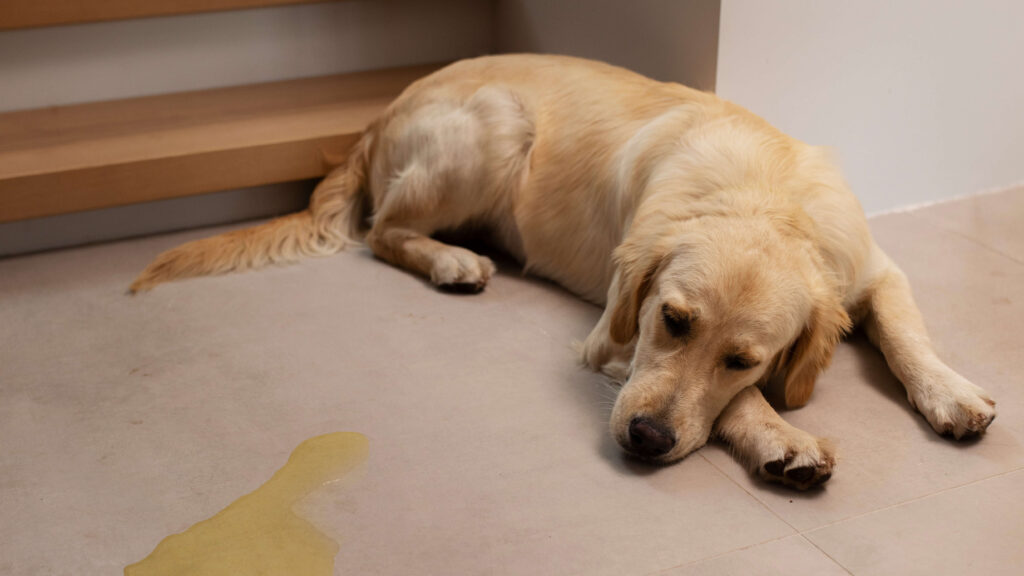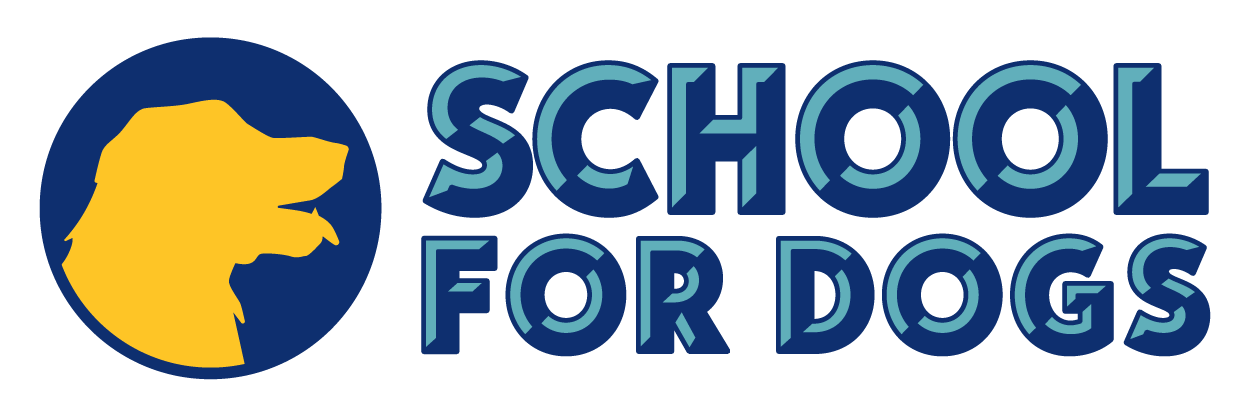
Most owners who contact me about this protocol are desperate—ready to rehome their dogs because this behavior has become so problematic. These cases typically involve:
- Adult dogs (2+ years) who never learned indoors isn’t a toilet
- Shelter-raised puppies denied consistent potty training opportunities
That’s where potty training difficult dogs with the Lockdown Method changes everything. By tethering your dog to you, you’ll:
- Decode their pre-potty signals
- Strengthen your communication and bond
- Systematically teach outside-only rules
Important: Always work with a professional trainer to adapt this to your dog’s unique needs. What follows is an outline—your trainer will tailor the details based on your dog’s progress.
The Goal
To create a clear system of communicating with your dog that helps your dog understand the rule that urination and defecation are only allowed outside. Also, to develop a verbal cue for potty outside.
Vocabulary
Relaxation room – enclosed area that can be moved from one location to another. For example an exercise pen or play pen. This is an option instead of being leashed to you. https://www.chewy.com/midwest-wire-dog-exercise-pen-step/dp/45381
Verbal cue –“wanna go outside?” “gotta potty?” whatever you ask your dog to ask if they need to go potty
Physical cue (from your dog) – Searching with their nose down, walking into another room, walking in circles, walking up to an object on parallel for male dogs is also a cue they’re going to lift a leg, sniffing a location, etc. Owners generally figure out the dogs physical cue during the first week of lockdown.
Potty location – where you want your dog to go.
It is imperative that you do not lose your concentration during lockdown. If you want to relax and not worry about your dog, please put them in a crate or their relaxation room with something to do.
Bedtime location should also be a crate or relaxation room.
This is essentially a 6 week program. Weeks 1 and 2 are the most difficult.
Weeks 1 & 2
You will leash the dog to you so that you can learn what your dog does right before they need to potty and to control their access to the regular “accident” areas. (Don’t just sit there! Talk to your dog. Play with them, train a few tricks, snuggle…interact!) If you’re going to have to be on lockdown with your dog, make it fun. Keep yourself and your dog entertained.
You will adhere to a schedule of outside potty time, leashed time or time in their relaxation room, and off-leash play/training time in an enclosed area.
- Wake up
- Go outside
- Have breakfast
- Go outside
- Start lockdown with verbal cue every 30 or so minutes for the first few days.
- Take a break, go for a walk or back outside to play or have alone time if your dogs are safe left outside.
- Back on lockdown either on leash or relaxation room
- Dinner
- Outside
- Relaxation room
- Outside
- Bedtime
Ask your dog every 30 minutes if they need to go outside “need to go potty??” and take them outside to the area they need to relieve themselves. If they potty, tell them they are good and give them a treat WHEN they are finished. Don’t talk to them until they are done.
If you need to leave your dog alone inside the house, please crate them.
If you have a playpen/exercise pen you can use this as a relaxation room where they can chew on toys or lay on their beds and watch tv with you. This relaxation room should be in your direct line of sight so you can watch for any behaviors that may become indicators for the need to go outside and potty
Think of this 2 week lockdown time in 30 minute intervals. If everyone is fine and relaxed watching an hour of tv then don’t ask if they have to potty unless they give a physical cue for potty. If you feel your dog can handle 60 minute intervals without an accident, work your way up to 60. You know your dog. Trust your instincts.
Weeks 3 & 4
Lock down with gradual increase of controlled off leash “free” time. This free time is in a controlled small area. Close doors to other rooms. Block hallways so they can’t be away from you. You should NOT take your eyes off them during this free time to reduce the risk of an accident. If you see your dog headed away from you, ask if they need to go outside and immediately take them outside to their potty spot. Remember. If you can not commit to absolute attention, feel free to break these free times into several sessions. Please set timers.
The protocol for weeks 5 & 6 will depend on your dog’s success during the first four weeks.
Please send me emails, text messages and phone calls
Week 1-2: Establish daily schedule with leashed lock down times or crate times.
Week 4-6: Daily schedule with gradual reduction of lock down.
By the end of the six weeks you and your dog will have a very clear communication established regarding potty expectations.
Example Schedule
Week 1 all on leash
6:30 am wake and let puppy out to potty
7:00 am breakfast
7:15 outside to potty spot/walk
8:00 am play-train on leash or in controlled area
8:30 am – crate when everyone leaves home
(puppy lunch break)
12:00 pm out to potty
12:15 pm lunch
12:45 pm potty
1:00-1:30 pm walk/play/train
1:30 crate
5:30-6:30 potty/play/train/snuggle
7? – dinner
7:30 walk/potty
8-bedtime – leashed to a family member with potty breaks at least every 45 minutes
| Time | Activity/notes (any accidents? |
